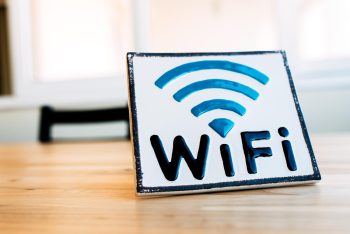
The anticipation surrounding Wi-Fi 7 has been steadily growing over the years, and recent developments suggest that its arrival may finally be imminent!
Most notably, the Wi-Fi Alliance® recently announced that it has chosen a member of the RUCKUS Wi-Fi 7 AP family for its Wi-Fi CERTIFIED 7 interoperability certification test bed. This signals that the next evolution of Wi-Fi is on the horizon, promising to bring a host of benefits that will soon be within our reach.
What exactly are these benefits?
Unless you’ve been completely disconnected, chances are you’ve caught wind of Wi-Fi 7’s promises, which include cutting-edge capabilities, lightning-fast connections, higher throughput, reduced latency, and enhanced reliability — advancements poised to redefine our digital experiences.

But beyond the buzzwords lies a profound reason why industries are eagerly awaiting Wi-Fi 7. It holds the potential to tackle longstanding connectivity challenges that have persisted for decades. These challenges include:
- Interference: Interference is an interruption to the Wi-Fi signal that may be caused by nearby electronic devices, neighbouring networks, microwaves, Bluetooth devices, and even physical barriers. This disruption generally degrades the Wi-Fi signal, leading to weak connections or disconnecting them entirely.
- Congestion: Congestion happens when a Wi-Fi network gets bogged down due to the sheer number of devices connected to it. Networks can only accommodate a certain volume of bandwidth at a time. So, as the number of connected devices increases, the harder it will be for the network to handle the resulting traffic. This digital traffic jam of sorts results in slow speeds and latency issues.
- Instability: Instability can cause a Wi-Fi network to exhibit erratic behaviour, causing connections to drop unexpectedly or fluctuate in strength. These fluctuations are caused by different factors, including signal interference, distance from the router, and environmental conditions.
As the latest advancement, Wi-Fi 7 is poised to surpass its predecessors, equipped to tackle signal- and connection-related challenges while enhancing the overall quality of service. Wi-Fi 7 boasts significant strengths that enable it to overcome these hurdles:
- Extremely high throughput: Achieved through advanced technologies like 4K QAM, 16 Spatial Streams, and 320 MHz Wide Channels, Wi-Fi 7 vastly improves support for demanding applications such as VR, AR, online gaming, cloud computing, and remote work.
- Punctured Transmission: This feature allows the access point and the client to allocate a portion of a channel to mitigate interference, optimising throughput and reducing latency. By maximising spectrum usage, it enhances performance in the presence of interference.
- Multi-Link Operation (MLO): MLO in Wi-Fi 7 enables a single client device to communicate with an access point over multiple radios and frequency bands concurrently, enhancing wireless resilience, particularly in congested wireless environments.
The remarkable advantages of Wi-Fi 7 position it as a highly anticipated innovation in the near future, with its availability dependent on the pace of development. Notably, RUCKUS has demonstrated leadership by having its Wi-Fi 7 AP family selected as the sole commercial access point in the Wi-Fi CERTIFIED 7 interoperability certification test bed. This recognition underscores RUCKUS’s commitment to driving advanced Wi-Fi performance and ensuring seamless interoperability across Wi-Fi CERTIFIED 7 devices, setting a new standard for connected devices worldwide.
Access RUCKUS’ extensive white paper to learn more about the groundbreaking features of Wi-Fi 7 HERE.
 (0)
(0) (0)
(0)Archive
- October 2024(44)
- September 2024(94)
- August 2024(100)
- July 2024(99)
- June 2024(126)
- May 2024(155)
- April 2024(123)
- March 2024(112)
- February 2024(109)
- January 2024(95)
- December 2023(56)
- November 2023(86)
- October 2023(97)
- September 2023(89)
- August 2023(101)
- July 2023(104)
- June 2023(113)
- May 2023(103)
- April 2023(93)
- March 2023(129)
- February 2023(77)
- January 2023(91)
- December 2022(90)
- November 2022(125)
- October 2022(117)
- September 2022(137)
- August 2022(119)
- July 2022(99)
- June 2022(128)
- May 2022(112)
- April 2022(108)
- March 2022(121)
- February 2022(93)
- January 2022(110)
- December 2021(92)
- November 2021(107)
- October 2021(101)
- September 2021(81)
- August 2021(74)
- July 2021(78)
- June 2021(92)
- May 2021(67)
- April 2021(79)
- March 2021(79)
- February 2021(58)
- January 2021(55)
- December 2020(56)
- November 2020(59)
- October 2020(78)
- September 2020(72)
- August 2020(64)
- July 2020(71)
- June 2020(74)
- May 2020(50)
- April 2020(71)
- March 2020(71)
- February 2020(58)
- January 2020(62)
- December 2019(57)
- November 2019(64)
- October 2019(25)
- September 2019(24)
- August 2019(14)
- July 2019(23)
- June 2019(54)
- May 2019(82)
- April 2019(76)
- March 2019(71)
- February 2019(67)
- January 2019(75)
- December 2018(44)
- November 2018(47)
- October 2018(74)
- September 2018(54)
- August 2018(61)
- July 2018(72)
- June 2018(62)
- May 2018(62)
- April 2018(73)
- March 2018(76)
- February 2018(8)
- January 2018(7)
- December 2017(6)
- November 2017(8)
- October 2017(3)
- September 2017(4)
- August 2017(4)
- July 2017(2)
- June 2017(5)
- May 2017(6)
- April 2017(11)
- March 2017(8)
- February 2017(16)
- January 2017(10)
- December 2016(12)
- November 2016(20)
- October 2016(7)
- September 2016(102)
- August 2016(168)
- July 2016(141)
- June 2016(149)
- May 2016(117)
- April 2016(59)
- March 2016(85)
- February 2016(153)
- December 2015(150)

